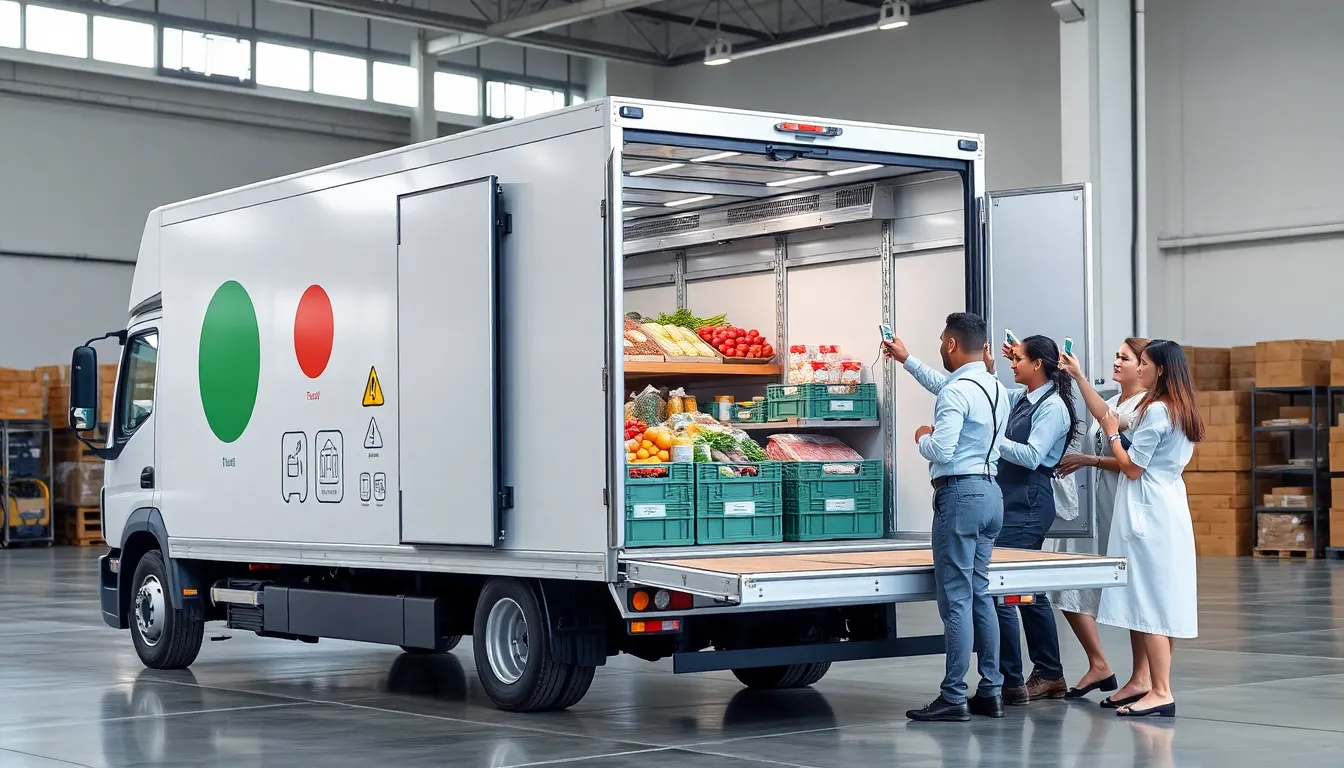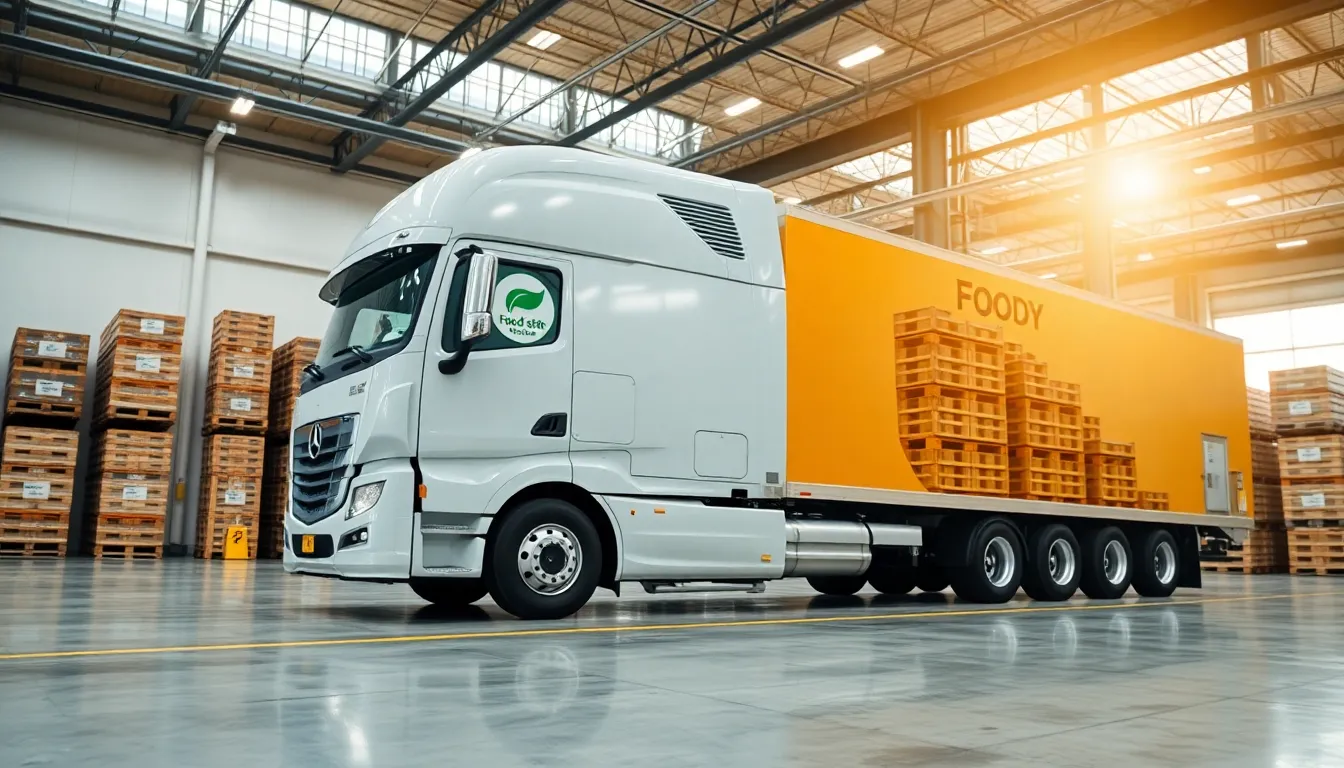Table of Contents
ToggleWhen it comes to food safety, transport plays a crucial role that’s often overshadowed by production and preparation. Surprising, right? Imagine sending a delicious fruit basket on a joyride across the country, only to have it arrive mushy and unappetizing. Food transportation standards are here to prevent that gastronomic disaster and ensure the food we consume remains safe and delectable. In this text, we’ll dive deep into the nitty-gritty of food safety transportation standards while keeping it informative and entertaining. Let’s buckle up and hit the road to safer food transportation.
Food Safety Transportation Standards

Food safety transportation standards are guidelines that dictate how food products should be stored and transported to maintain their safety and quality. They cover every aspect of the journey, from the initial warehousing to the final delivery to retailers or consumers. These standards ensure that products are kept at proper temperatures, protected from contaminants, and delivered in a manner that preserves their intended quality. The crux of these regulations is to minimize the risk of foodborne illnesses, which can arise from improper handling or transportation.
Transporting food isn’t as simple as loading it on a truck and hitting the road. Different types of food have unique requirements. For instance, perishables like meat, dairy, and produce demand specific temperatures to prevent spoilage. Hence, understanding these standards isn’t just about compliance: it’s about ensuring that every meal you enjoy is safe and fresh.
Importance of Food Safety in Transportation
The significance of food safety in transportation cannot be overstated. When food is improperly stored or transported, it can lead to contamination, spoilage, and potentially disastrous health outcomes. According to the Centers for Disease Control and Prevention (CDC), foodborne illnesses affect 48 million people annually in the U.S. alone, leading to serious health risks.
For businesses, ensuring food safety during transportation is not just a matter of compliance but also a competitive advantage. Companies that prioritize safe transport practices often enjoy higher customer trust and loyalty. Shoppers tend to choose brands that demonstrate responsibility and transparency throughout their supply chain. In short, it’s not just good practice: it’s good business.
Key Regulations Governing Food Transportation
Various regulations govern food transportation standards, most notably the Food and Drug Administration (FDA) guidelines and the U.S. Department of Agriculture (USDA) regulations. The Hazard Analysis Critical Control Point (HACCP) system is also widely adopted, focusing on proactive measures in the food supply chain.
Also, the Sanitary Transportation of Human and Animal Food final rule requires that food transporters develop written procedures to ensure that food is transported in a safe manner. This regulation defines what constitutes safe temperatures and conditions needed to transport different food items. Beyond federal regulations, many states carry out their own standards, adding another layer of complexity to compliance.
Best Practices for Ensuring Food Safety During Transport
To ensure food remains safe during transportation, companies should adopt several best practices:
- Maintain Proper Temperature: Different foods have specific temperature ranges. Cold foods typically need to be stored at 32°F to 40°F, while hot foods should be kept above 140°F.
- Regular Maintenance of Vehicles: Transport vehicles should be regularly inspected and maintained to prevent any mechanical failures that might compromise food safety.
- Training Staff: Employees involved in food transportation should be trained on food safety practices, including how to handle products during loading and unloading.
- Use Appropriate Packaging: Packaging should be designed not only to protect the food but also to maintain the required temperature and prevent contamination.
- Carry out Tracking Systems: Technologies like GPS and temperature monitoring devices can help ensure compliance with safety standards during transport.
Challenges in Food Transportation and Safety Compliance
Like any industry, food transportation faces several challenges that impact safety and compliance. One significant hurdle is temperature fluctuations, which can occur due to improper loading procedures or vehicle malfunctions. Also, delays in transit, often caused by unforeseen factors like traffic or weather, can lead to food spoilage.
Another challenge is the lack of uniform regulations across states. While federal guidelines provide a general framework, state regulations can vary, leading to confusion for businesses operating in multiple jurisdictions. Besides, maintaining an ongoing training program for employees can often be overlooked due to budgetary constraints.
Future Trends in Food Safety Transportation Standards
As technology continues to advance, food safety transportation standards are evolving. Innovations such as blockchain technology are emerging to enhance traceability in the food supply chain. This technology allows for real-time tracking of food items, making it easier to pinpoint the source of any safety issues that may arise.
Also, the rise of IoT (Internet of Things) devices means transportation companies can monitor conditions such as temperature and humidity more accurately. Predictive analytics will also play a role in enhancing compliance by helping companies anticipate potential issues before they become serious problems. A focus on sustainability will push the industry toward better practices that not only ensure food safety but also minimize environmental impact.




